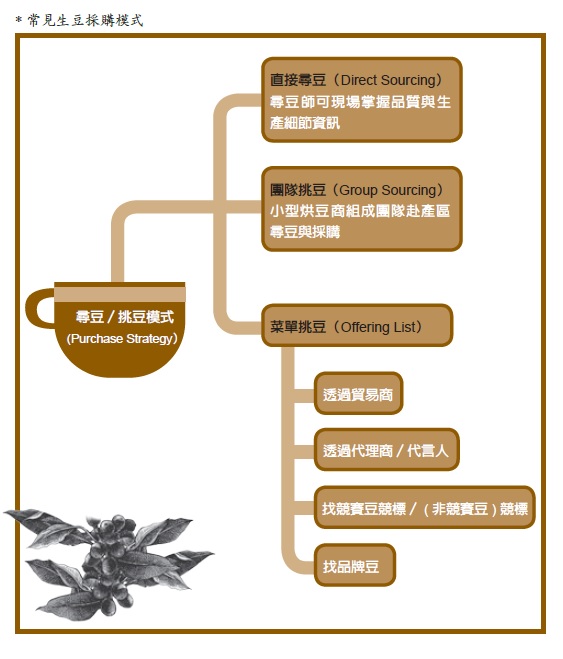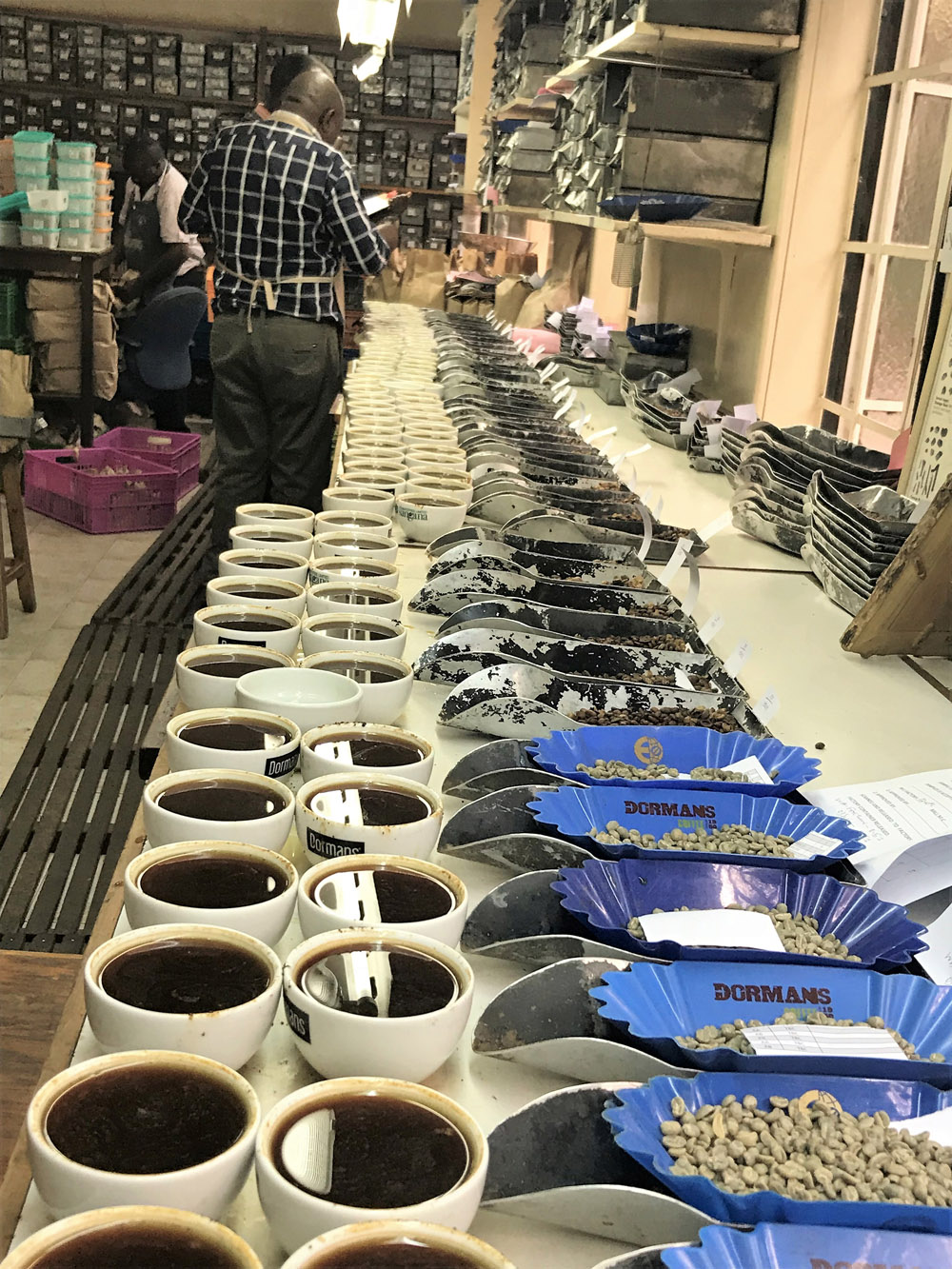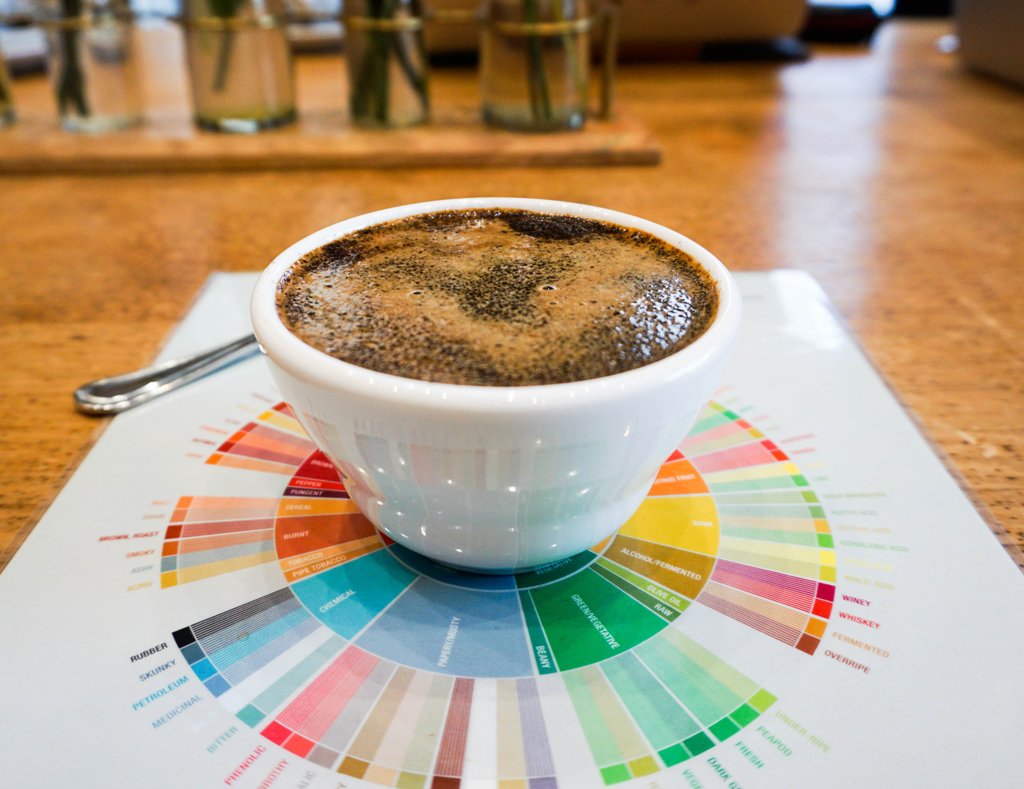High-priced beans = good beans = ultra-high quality? What are the ways and methods to buy raw coffee beans?

Professional coffee knowledge exchange more coffee bean information please follow the coffee workshop (Wechat official account cafe_style)
At present, the supply of raw beans in the market is not only abundant and comes from many sources. How to maintain the stable quality of raw beans and establish a long-term strategic partnership with the sources is a major responsibility of bean buyers. There are three questions that bean hunters should ask themselves from time to time and use them as inspection tools:
High-priced beans = good beans = ultra-high quality?
How does the source supplier determine the batch to be given? Is the quality consistency high or low? why is the quality out of order?
Is the raw bean information fully disclosed? Can you connect to the source?
Finding beans directly and picking beans from the menu
There are two main modes of bean hunting and bean picking: "finding beans directly" and "picking beans from the menu". The former is the task of bean hunters, testing and initially finding the desired batches in the producing area, and then handling logistics operations such as follow-up exports according to the process. Large enterprises may purchase independently, and small and medium-sized enterprises may purchase together with teams. Those who are unable to go to the producing areas first-hand to pick beans, rely on raw bean suppliers, and are selected from the items provided, it is called "menu picking beans (purchase from offering list)".
Direct search for beans, ──, from collection to cup testing, are interlinked
Being able to observe firsthand at the scene and share the details of experience with bean bakers, baristas and even consumers is definitely a major incentive for bean hunters to travel all the way to the producing areas. As a matter of fact, the process from bean hunting to purchasing is long and complicated, and it is not romantic to go to various production areas year after year for observation, cup test and screening, and it is usually not a single visit to decide on batch finalization. each producing area needs at least two or three cup tests and raw bean inspection in order to have a more definite result. Once you find the right beans, in addition to determining the purchase quantity, you have to keep in touch with the fruit growers, so that you can get back to you in the next season and maintain a long-term relationship between the two sides-- however, the above process only belongs to the stage of purchasing raw beans. Good beans are shipped back to China across the sea, and finally the quality of roasting and brewing cups is what the end consumers care about most, which can satisfy the people who pay for coffee. "directly looking for beans" is the perfect end.
From the coffee tree in the producing area to the cup of coffee served on the table, a series of processes are interlinked and more tedious than expected, and because raw beans are not the end commodity, they still have to be processed to become the so-called coffee. No matter how famous and experienced the bean hunter is, no matter how old the bean hunter is, and then three pats on the chest to ensure the quality, it is not easy to get everyone to pay for it! Rob Parker (Robert Parker), the wine taster of the red wine industry, can affect the winery's huge profits with a score of one person, but it is not easy for the king to determine the direction of the market in the coffee circle. Whether it is raw beans, cooked beans or out-of-cup coffee, there are too many links that must be taken into account and discussed in order to identify the quality.
The boutique coffee industry judges and discusses the three key points of coffee quality: "raw bean quality and grade", "baking ability and ripe bean quality", "bar technical proficiency and cup coffee quality", none of which can cover all aspects. Even in the same company, professionals in the four fields of bean hunting, baking, bar player and customer service can hardly steadily supply coffee if they cannot cooperate tacitly with each other. In order to get satisfactory quality, we must go through professional division of labor and overall mastery.

With the arrival of the new ♦ production season, bean hunters often conduct intensive cup tests to pick beans in Nairobi, Kenya, with more than 30 samples in a round.
The difference between team picking beans and menu picking beans
Coffee grower ─ Bean Roaster ─ brewer is the shortest distance from raw beans to a good cup of coffee, but the reality is that small bean bakers are usually unable to find beans directly for a long time. "team bean selection" and "menu bean selection" are the bean selection references and main bean sources that small self-baking shops rely on. Small-scale bean bakers have become the trend and current situation of the entire Asian coffee circle, including the three places on both sides of the strait, South Korea, Japan, or the emerging Malaysia, Thailand, Vietnam and even India. This also lively the coffee culture everywhere. If you can find a good source of beans, the self-baking shop will take the first step to maintain a good flavor.
Small bean bakers can form teams to go to the producing areas to find beans and purchase beans, because the difficulty and cost of finding beans directly is very high, and alliance and cooperation can lower the threshold. I have observed three teams in Asian coffee circles over the past 10 years and found that cooperative bean hunting is really feasible. Most of the team procurement will be carried out by representatives to the production area, and members can also test and select beans in their stores. This kind of "small team of bakers looking for beans directly" is different from buying from traders, which can be regarded as the mode of picking beans directly in the place of origin. The three cases I have observed include the "Japanese Bean Baker Alliance JRN" formed by Japan's "Maruyama Coffee". For more than a decade, Mr. Kentaro Maruyama has helped the team pick beans; the second team is "Taiwan Bean Baker Alliance TRN", which has entered the sixth year by Osher Coffee to help find beans. The third example is "Busan Bean buying Troupe in Korea", assisted by "Momos Coffee". In this case, by improving the technical ability of group members, including cup test and selection of beans, cup test identification and baking technology exchange, the scope of operation has entered into full-quality communication and sharing, which is worthy of study and reference by small bean bakers.
The way the team picked beans also set off a successful link between small bean bakers and the source of origin to establish a supply-demand relationship directly. The advantage is that batches can be selected according to first-hand information, without having to buy inherent batches through traders, which is especially suitable for small bean baking alliances. But team building must have vision, ability, team centripetal force and long-term feasible operation system.
For small shops that do not understand the language and have a threshold for import and export, the source of beans that is easiest to use is picked from the supply list of raw bean suppliers. The supply list of raw beans must indicate the date of stock or imminent arrival, which is called "menu purchase from offering list". Beans selected by the supply list usually have to be decided after only one cup test, and it is often heard that buyers need to place an order when they cannot be tested by cup. this kind of beans may be famous, in short supply, or the agent cannot provide sufficient samples. The advantage of menu picking beans is that there are multiple channels and a large number of beans for you to choose, eliminating the complicated procedures such as customs declaration and transportation of direct transactions, which can effectively shorten the procurement period, but in contrast, there is naturally no first-hand information, and most suppliers do not provide PSS (pre-arrival samples), so the information is extremely asymmetric, so you can only inquire about the market reviews or purchase from trusted suppliers.
This article is excerpted from the African curiosity of the Bean Hunter 2 ─ International Coffee Review.
END
Important Notice :
前街咖啡 FrontStreet Coffee has moved to new addredd:
FrontStreet Coffee Address: 315,Donghua East Road,GuangZhou
Tel:020 38364473
- Prev

How to test deep-baked coffee beans? How to measure deep-roasted coffee beans objectively and economically?
Professional coffee knowledge exchange more coffee bean information Please follow the coffee workshop (Wechat official account cafe_style) with the promotion of the concept of boutique coffee, more and more people begin to pay attention to the freshness of coffee beans, while in some bakeries with small production or more varieties, the most troublesome thing in daily roasting, especially in small batch roasting, is the stability of flavor, so each roasting
- Next

Does Furei White Coffee taste good? how to drink it? the characteristics of the production method of Australian White Coffee introduce that Australian white coffee is good to drink cold and hot.
Professional coffee knowledge exchange more coffee bean information please follow the coffee workshop (Wechat official account cafe_style)
Related
- Detailed explanation of Jadeite planting Land in Panamanian Jadeite Manor introduction to the grading system of Jadeite competitive bidding, Red bid, Green bid and Rose Summer
- Story of Coffee planting in Brenka region of Costa Rica Stonehenge Manor anaerobic heavy honey treatment of flavor mouth
- What's on the barrel of Blue Mountain Coffee beans?
- Can American coffee also pull flowers? How to use hot American style to pull out a good-looking pattern?
- Can you make a cold extract with coffee beans? What is the right proportion for cold-extracted coffee formula?
- Indonesian PWN Gold Mandrine Coffee Origin Features Flavor How to Chong? Mandolin coffee is American.
- A brief introduction to the flavor characteristics of Brazilian yellow bourbon coffee beans
- What is the effect of different water quality on the flavor of cold-extracted coffee? What kind of water is best for brewing coffee?
- Why do you think of Rose Summer whenever you mention Panamanian coffee?
- Introduction to the characteristics of authentic blue mountain coffee bean producing areas? What is the CIB Coffee Authority in Jamaica?

